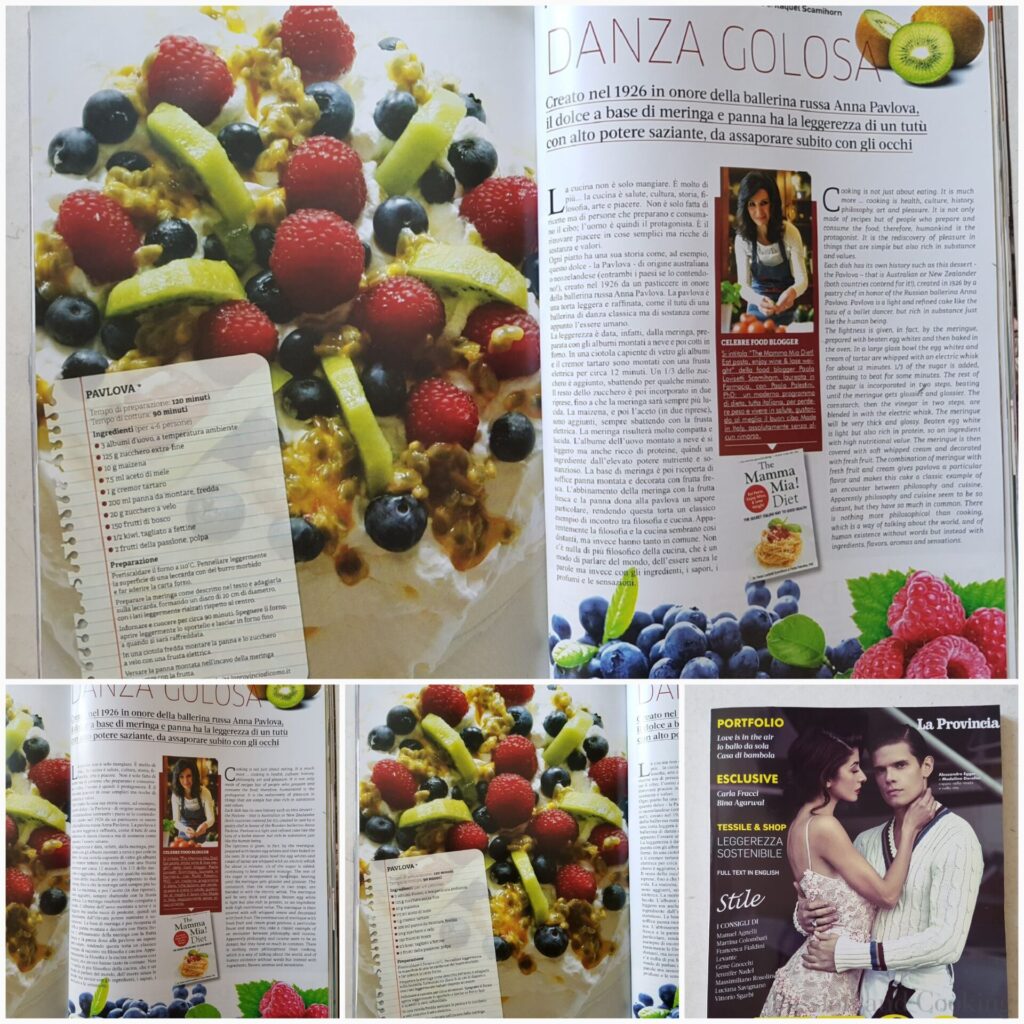CUISINE MEETS PHILOSOPHY: PAVLOVA AND THE SUSTAINABLE LIGHTNESS OF BEING
Cooking is not just about eating. It is much more … cooking is health, culture, history, philosophy, art and pleasure. It is not only made of recipes but of people who prepare and consume the food; therefore, humankind is the protagonist. It is the rediscovery of pleasure in things that are simple but also rich in substance and values.
Each dish has its own history such as this dessert – the Pavlova – that is Australian or New Zealander (both countries contend for it!), created in 1926 by a pastry chef in honor of the Russian ballerina Anna Pavlova. Pavlova is a light and refined cake like the tutu of a ballet dancer, but rich in substance just like the human being.
The lightness is given, in fact, by the meringue, prepared with beaten egg whites and then baked in the oven.
In a large glass bowl the egg whites and cream of tartar are whipped with an electric whisk for about 12 minutes. 1/3 of the sugar is added, continuing to beat for some minutes. The rest of the sugar is incorporated in two steps, beating until the meringue gets glossier and glossier. The cornstarch, then the vinegar in two steps, are blended in with the electric whisk. The meringue will be very thick and glossy. Beaten egg white is light but also rich in protein, so an ingredient with high nutritional value.
The meringue is then covered with soft whipped cream and decorated with fresh fruit. The combination of meringue with fresh fruit and cream gives pavlova a particular flavor and makes this cake a classic example of an encounter between philosophy and cuisine. Apparently philosophy and cuisine seem to be so distant, but they have so much in common. There is nothing more philosophical than cooking, which is a way of talking about the world, and of human existence without words but instead with ingredients, flavors, aromas and sensations.
PAVLOVA
Total preparation time: 120 minutes Baking time: 90 minutes Servings: 4-6

INGREDIENTS
3 egg very fresh whites, at room temperature
125 g (1/2 cup) extra-fine sugar
10 g (1 scarce tablespoon) cornstarch
7.5 ml (1/2 tablespoon) apple vinegar
1 g (a pinch) cream of tartar
200 ml (1 scarce cup) whipping cream, cold
20 g (1 1/3 tablespoon) powdered sugar
150 g (5-6 oz)fresh berries
1/2 kiwi, cut into slices
2 passion fruits, pulp
DIRECTIONS
1. Preheat the oven to 110 °C (230°F). Lightly brush the surface of a baking sheet with some soft butter, then place some parchment paper on top
2. Prepare the meringue as described in the text above and gently place on the baking sheet, forming a disc of about 20 cm diameter with the sides slightly higher than the center.
3. Place in the oven and bake for about 90 minutes. Turn off the oven, slightly open the door and allow to cool completely.
4. In a cold bowl whip the cream and powdered sugar with an electric whisk.
5. Pour the whipped cream on the meringue and decorate with the fruit.
This recipe is not Italian. I have been asked by TESS magazine to create a recipe that can represents the suspended lightness of being. I thought of Pavlova. This recipe has been published in the Italian magazine TESS (16 March, 2018 pag. 158-159). – Paola


Very pretty, Paola. A true work of art.
Thanks so much Frank!